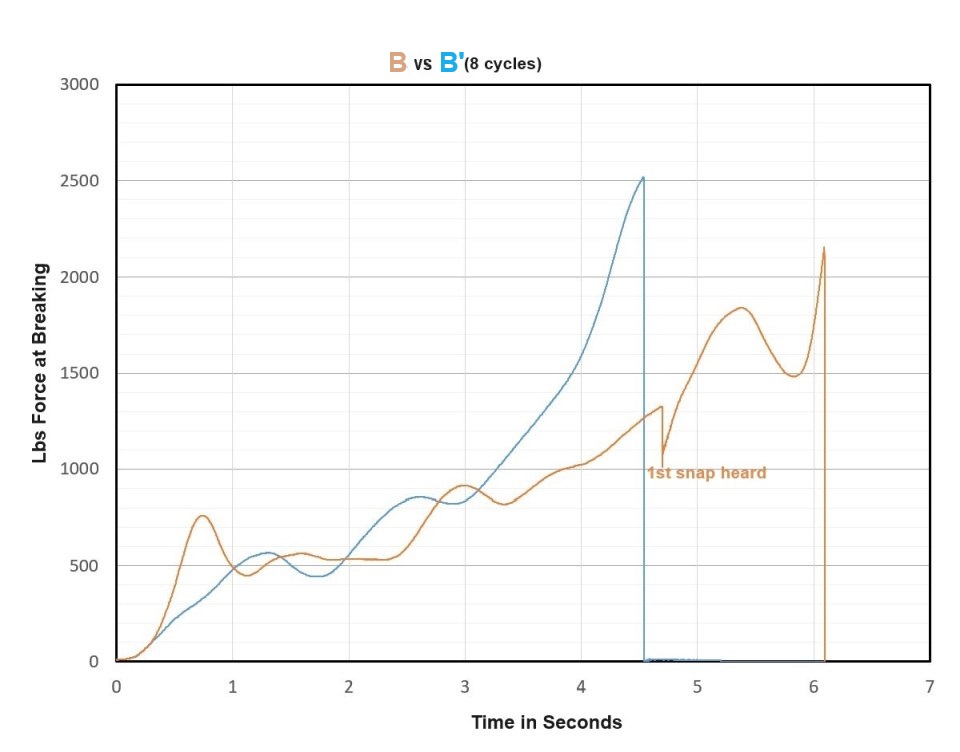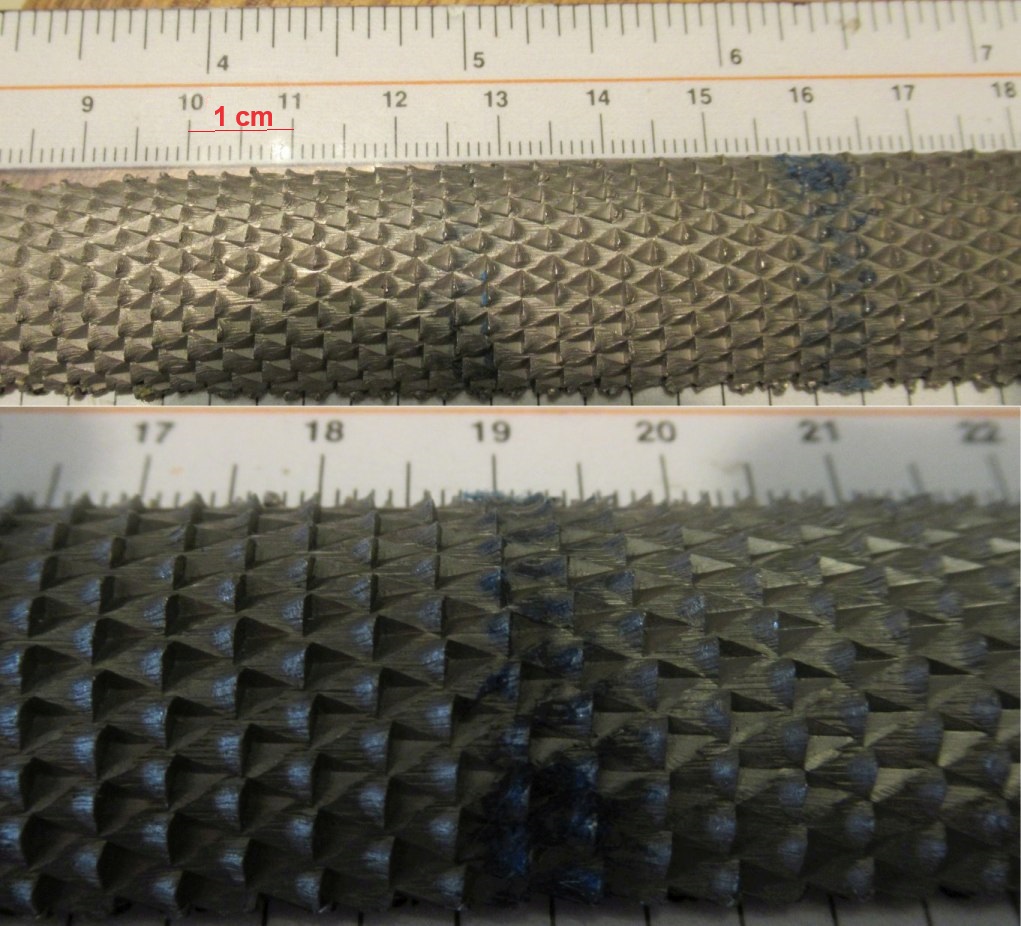
Dyneema
Abrasion
These tests were motivated by two incidents. In the
first, I had to pull a double strand of 1/8” Amsteel after rapping down an
overhanging sandstone face of “The Owl” in Red Rock (https://hwstock.org/owl/).
At the very top,
the Amsteel ran over some sharp projections of sandstone. There was no
problem
until I was down and tried to pull the cord, and it stuck firmly. I put
my
body weight on the cord, bounced, and gradually it freed; but when I
examined it
later, I
found that one of 12 strands was cleanly cut. I’m guessing one strand
caught on
a projection, and was severed by the knife-like quartz. In the second,
I had
placed a 4000 lb, eye-to-eye Amsteel sling around a rock horn, and held
the
eyes together with a quicklink. The frictional rock made it very
difficult to
slide the sling around the horn. Yet every person who rapped off that
section
insisted on yanking the sling back and forth, apparently afraid
that if
the forces were not “equalized” on each eye, there would be some
catastrophic
result. All this fruitless tugging abraded the sling. So I wanted to
quantify how
strong
Amsteel remains—especially compared to other materials—with the
inevitable
abrasion. While we thing of Dyneema as being abrasion-resistant,
equivalent-strength cords can be much thinner than PET (polyester), and
the manner of weaving Dyneema into ropes can make it likely to snag.
I. Extreme
Tests of Abrasion: Dyneema 12-strand (3.2 mm) vs. 6.5 mm PET Kernmantle
This very aggressive test shows a weakness of 12-strand
braided Dyneema (Amsteel blue 1/8”), versus kernmantle construction PET cords.
The setup was as shown in this video (boy I look like an old bald man):
A very coarse part-round wood file/rasp is affixed to the
top of a pullup bar, and the test section is pulled over it against a 10 lb
dumbbell 6x, back and forth. I tried to be consistent with the length of each
stroke for all samples. Here is the file:

The fiile was cleaned with a wire brush between tests, and the PET and Amsteel samples were alternated.
Below are the samples after the tests.
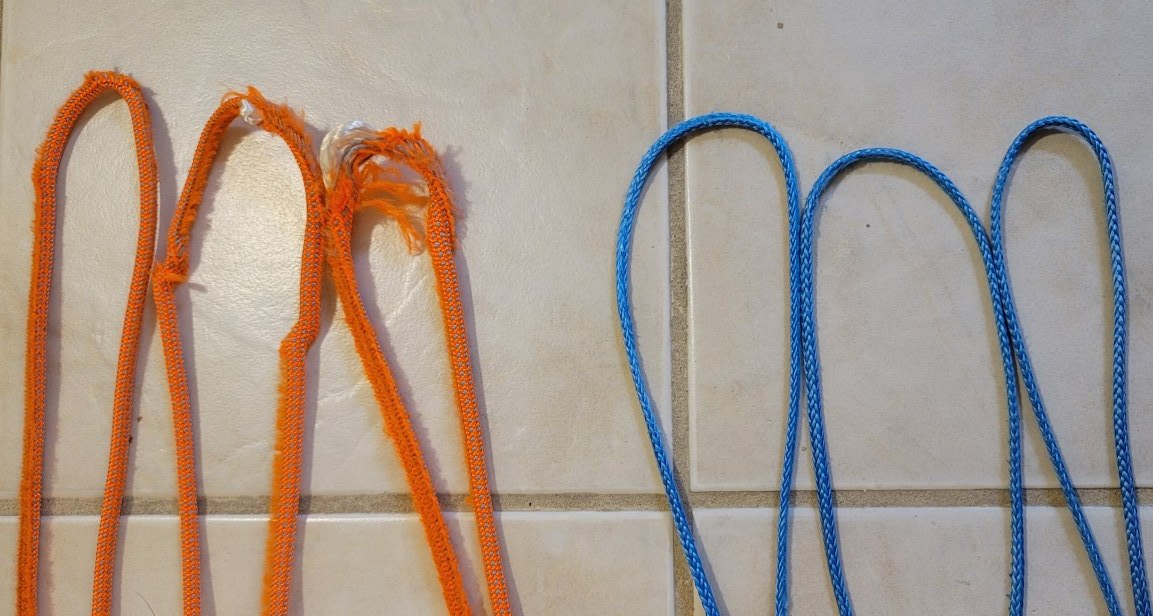
The previous photo makes the Dyneema appear better than it was, because…
The
trouble with braids
In a 12-strand hollow braid, any strand that is “inside” is “outside" within a few diameters of the cord, and each strand winds completely around the rope within ~16 diameters (depending on the lay angle). Thus a pull that seems to abrade only one side of the rope, really compromises all strands.
In the setup above, kernmantle ropes abrade quite
differently. The 90 degree intersections between yarns in the sheath quickly
catch and rip on projections of the file, and the rope gets desheathed,
exposing the core. But the parallel strands of the core have no such
intersections to catch, and further pulls back and forth fuzz the core strands
somewhat; but the core strands then erode slowly.
This plot shows the results of subsequent pull tests:
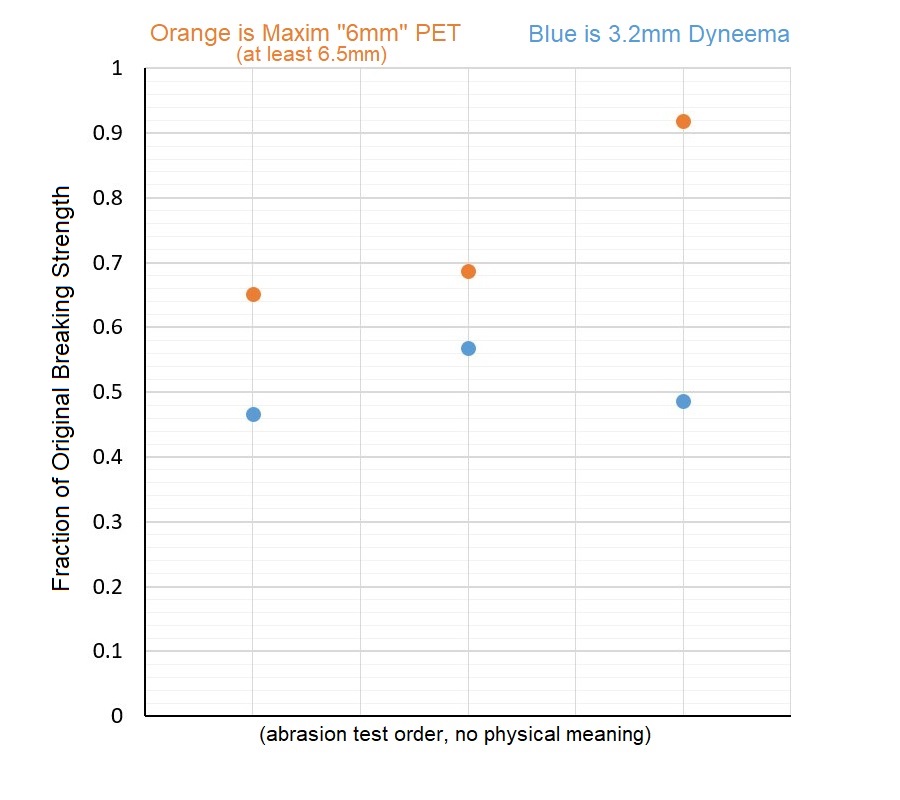
Comments: The kernmantle cord did “better,” essentially because in the
two samples that desheathed, the core fibers, which were nearly parallel, just
pulled back and forth between the file projections. I have no idea why one
section of kernmantle was relatively less affected.
II.
Amsteel Pulled over a Rough Brick for Different Lengths of Time
This test was conducted similarly to the previous, but with just Amsteel sections pulled back and forth 0, 4, 8, 16, and 32 times over a sawn rough brick (40mmx48mm). This brick is much more “rock-like” than the coarse wood files used above. As before, the brick was Gorilla-taped to the top of my pullup bar.
The brick is mostly made of 1-10 mm clasts that easily
scratch glass, and by appearance seem to be pieces of ground igneous or
metamorphic rocks. A small amount of mortar, probably dyed with iron oxide-hydroxide,
holds the clasts together:
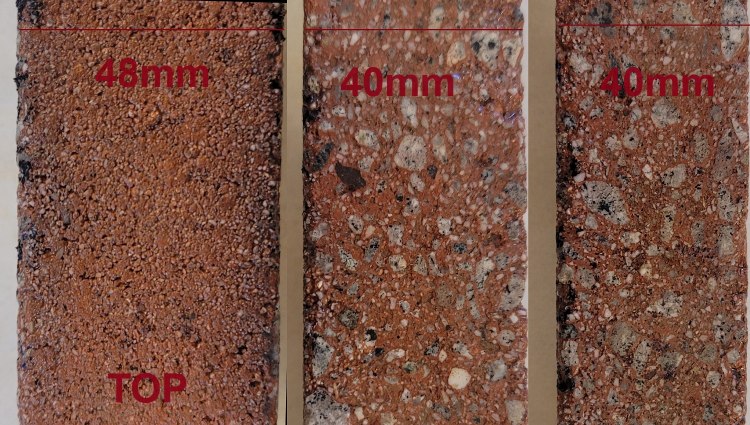
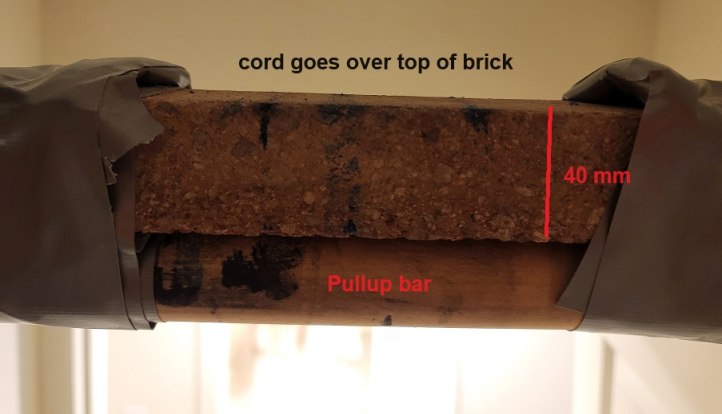
The brick was scrubbed clean with a fine wire brush in between tests.
The initial pull over the brick requires a force of about 50 lbs (measured with linescale 3), and subsequent pulls, each 1 second long with and about 3’ throw, required about 40 lbs. In between forward pulls, the cord is allowed to fall back over the brick under the weight the dumbbell (10 lbs) for 3’.
The results are shown below, with subsequent discussion to
explain the differences.

IIA: Scoping Test
All pieces were pulled from scrap Amsteel I had saved from decommissioned ropes, and the 4-pull sections showed the most fuzzy-strand wear before the test. One of the 4-pull tests was caught in a crack for 2 pulls and showed unexpected wear (the cracks was sealed before the second set of tests.) Both the 32- and 16-pull sections were quite hot after the test, and both showing signs of glazing (partial melting). Notably the Samthane coating (the carrier for the dye, and said to increase wear-resistance) had partly rubbed off all these samples before the tests. I have found that the Amsteel becomes more slippery as the Samthane wears off. All pieces were terminated with bury eye splices, sewn loosely with 100 lb braided spectra fishing line (~20 stitches). After the pulls, each section was pulled to breaking behind my Jeep, and the force to breaking was measured and recorded on a Linescale 3 sampling 640 times per second.
IIB: Tests with New Amsteel
These tests used new black 1/8” Amsteel purchased from SBG
Knots; the cord came in a plastic bag with a Samson label and literature. The
cord was cut into 7.5’ sections which were then fashioned to have a class 2
bury eye splice on each end, as described above. The first series of 0, 4, 8,
16, and 32 pulls was completed, then the 2nd set of 0, 4, 8, 16, and
32 pulls was performed. All samples were then pulled to breaking as described
above.
Comments: The most obvious conclusion is that: over a rock-like substrate, Amsteel
can retain much of its strength, until the continued rubbing/abrasion brings
it near the melting point. The number of samples is too small for a
definitive conclusion about the role of Samthane; but I suspect that Samthane
increases the coefficient of friction enough, that fewer pulls are needed to
bring the Amsteel near melting. The two 8-pull samples broke at fairly
different forces; not surprisingly, the lower-breaking sample was visually
more abraded. As seen in the plot below, the first sample had two separate
“snapping” episodes.
